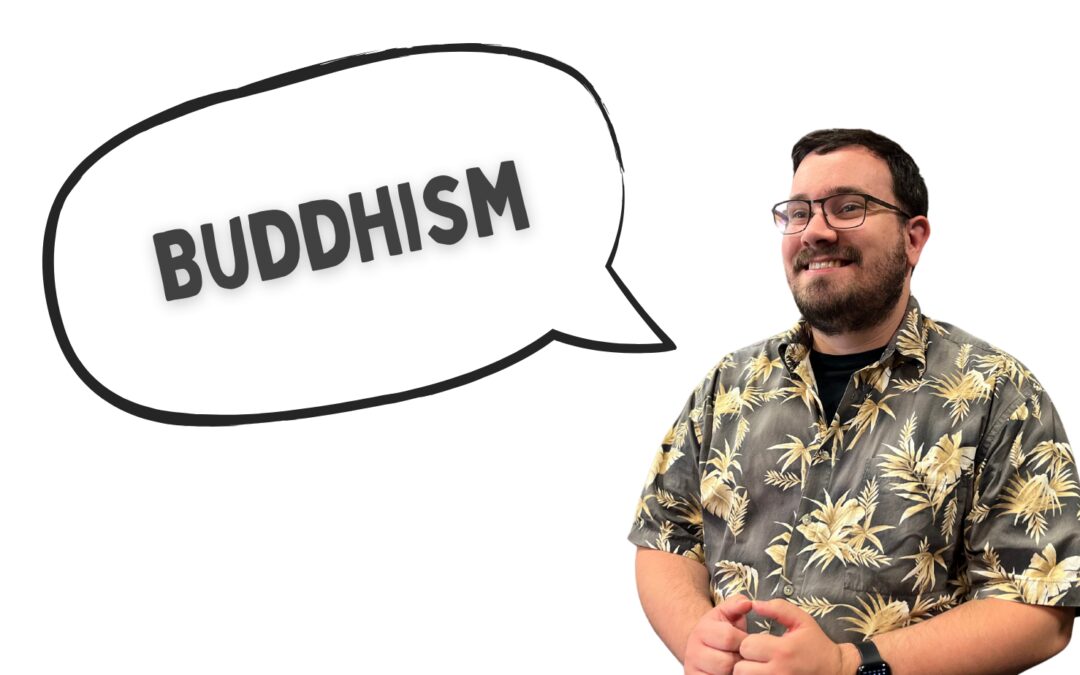Hello & Welcome! Today we’re talking about Buddhism, the eastern philosophy dedicated to achieving Nirvana, paradise. If your new to the blog allow me to explain, I’m the pocket theologian and here we like to take a theological or philosophical topic and talk about it in as much time as it takes to do it justice.
History:
So Buddhism begins with the Buddha, and no it’s not that little statue you see at your favorite sushi place. The Buddha or Siddhartha Gautama, as he was named, actually has a very interesting story. Which starts sometimes between the 4th and 6th century, most of the sources I consulted say it’s more likely the sixth, so the soon to be Buddha was born to a king and queen in the Himalayan mountains. Now before he was born, the queen had a vision of a white elephant entering her womb. Signifying that her son would be a legend, and then while traveling the baby was born painlessly, and the he, the Buddha, stood up and exalted himself.
Once they arrived back at the palace a prophecy was given concerning the boy, that he would either be a king or a religious man. Dear old dad didn’t want his son to be a monk, so he did everything he could to sway the decision. Sheltering the boy from disease, religion practices, death, and all that. Leading to a fascinating example of ancient helicopter parenting.
But like with all “helicopter parents” the Buddha soon got fed up, and asked his dad to go on a chariot ride outside the palace. His father begrudgingly agreed and purged the surrounding area of all that could persuade his son to consider religion. But, unfortunately, the devas of Hindu mythology took an interest in the Buddha and decided to intervene, each of them becoming one of the four things that could sway Buddha to religion. An old man on the verge of death, a man with a disfiguring disease, a funeral procession for a decomposing corpse, and
a holy monk displaying the serenity of a life of renunciation.
These sights troubled the young Buddha who proceeded to have a crisis of faith, and soon abandoned his life at the ripe old age of 30, he cut his hair and decided to embark on a life of simplicity. He soon became quite the monk, able to meditate and do other cool stuff other monks could only dream of such as living on only one grain of rice a day or staying in meditation for days. But even this soon became not enough for the Buddha, so he decided to force himself to enlighten, by sitting under a fig tree, under either he died or achieved enlightenment. While some forces tried to mess up the Buddha’s concentration they all eventually came to naught, and before long the Buddha did achieve enlightenment, officially earning his name.
The Buddha then began his life of teaching, where he teaches for several decades and even took on a few female disciples, which is notable for the time, but unfortunately all good things have to come to an end. After the Buddha ate a bad piece of pork he reclined on a tree in the grove where he was born and gave a message on “how to die”. Then his disciples took it upon themselves to spread his message across their world taking on several missions to India and other parts of Asia.
Not long after the Buddha’s death though, a splinter soon began to develop that still exists in Buddhism today. This is the Thereavada and Mahayana. Thereavada is the splinter that still follows the original monk like ways of Buddhism, while Mahayana is the more relaxed and easy going sect of Buddhism. This divide still exists even into the modern day.
Notable Figures:
Siddhartha Gautama- The first Buddha, that we discussed earlier. This guy is the founder of Buddhism and the one where it technically derives it’s name from. He, and his commitments, and convictions; I think has stood as an example to all Buddhists for generations. Besides maybe Jesus, you couldn’t ask for a better example for your religion or philosophy to start with. However, a part of me wonders how much of the tale is mythologized. I suppose the same could be said for any religious founder, but all the same one wonders about some of the details of his story. But regardless, a fantastic example to both congregates of his religion and others.
Ananda Gautama- This is one of the half brothers of Siddhartha. I didn’t put him into the history section because what i’m getting ready to tell you is his major contribution to Buddhism. And that is that he had an extraordinary auditory memory, and that he recorded verbatim the Buddha’s teachings, and helped to spread them throughout the world. Becoming a major influence in Buddhism, on his own because of it. Much of what he remembered ending up in the Tripitaka, a major influencing text in Buddhism.
Ashoka- Otherwise known as “Ashoka the great”; this guy was an Indian emperor of Maurya dynasty. He lived from 304 BC to 232 BC. Ashoka converted to Buddhism and helped it spread throughout India. Indian Buddhism owes a great deal to him, from what I have seen.
Key Characteristics:
Four “Noble” Truths- This can be said to be one of the “core” beliefs of Buddhism, the main pillars on which everything is built on. These four truths are: Number 1 to live is to suffer; Number 2 suffering is caused by attachment, Number 3 to eliminate suffering one must eliminate attachment; Number 4 one can eliminate attachment by following the noble eight fold path. Now dear reader, if you read that and felt a little bit cheated there at the end, I personally agree! Reading these feels like you’re reading an ad in a magazine which says: Are you overweight? Well you’re overweight because you eat too much; want to learn how not to eat too much? Well order this DVD and we’ll tell you! Now we’ll talk about the eightfold path here in a minute but before then, I want to discuss these four noble truths. Now one of the sources I consulted said that these truths shouldn’t be interpreted as normal, but as “spiritual” since in his words, he believes that living these principals out isn’t for the common man. Much wisdom can be gleaned from the Buddha, he says, but full Buddhism is best saved for the serious, and in a moment we’ll understand why.
Eight Fold Path- So the eightfold path is how one lives the best life, or one free of attachment. The eightfold path goes like this: (1) the right view—understanding the truths of existence, (2) the right intention—being willing to achieve enlightenment, (3) the right speech—saying all that is, and only what is, required, (4) the right action—doing all that is, and only what is, required, (5) the right livelihood—being a monk, (6) the right effort—directing one’s energy properly, (7) the right mindfulness— meditating properly, and (8) the right concentration—maintaining continuous focus. So basically to be a monk. Now most practitioners of Buddhism, don’t follow this way. This is meant mostly for monks, and full Buddhists, most people take these principals and glean what they can and use them in a different way in their lives.
The Ten Precepts- So to make this short, Buddhist monks follow an additional set of precepts, said to help them live better lives. Now only monks follow all 10. While most lay people, only need to follow the first 3, and on special days 5 more.
Extremes- Now this idea was developed by a later follower of Buddha, but basically it believes that the best life is lived without extremes. But taking the middle way with everything, which has a great deal of wisdom to it and is remarkably similar to our buddy, Aristotle’s golden mean, a couple hundred years before Aristotle. Once again this is an interesting parallel between east and west.
Attachment- The last key concept I want to touch on is something we’ve already discussed, but it’s this idea of attachment being the root of all suffering. To reflect on this and give it a western theologians spin, I would say that this kind of misses the point of the question. If you ask someone “why do we suffer?” and someone says “Because of attachment” I think that’s much like asking “Why did you hit my car?” and the person responding with “Well you shouldn’t care about your car.” It doesn’t answer the question, it more or less criticizes the root behind the question. Which, I will admit, is very thoughtful and insightful, but ultimately unhelpful.
Misconceptions:
The Buddha is the center of the religion- Turns out this isn’t the case! The teaching of the Buddha, matters more than the man himself. Many Buddhists are able to picture Buddhism easily without the Buddha, and oftentimes when speaking of the Buddha, they could be speaking on a whole host of different people who have used that name.
That Buddhism required you to live a monastic lifestyle- I imagine most people already know this. But most Buddhists today do not meditate, they are not vegetarians, or do any of the other cliche things typically associated with Buddhism.
That Buddhism is only a philosophy- many of the sources that I have consulted, like with Taoism, and Confucianism, these three philosophies really don’t work apart from each other.
And that’s all I have for now, go in peace!


Recent Comments